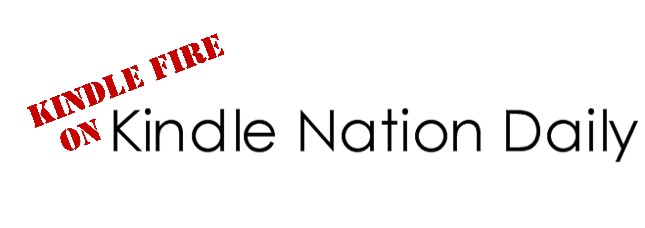 The new Kindle Fire HD entry-level model has a 7″ display screen, but that’s pretty much where the similarities between it and the first-generation Kindle Fire chassis end.
The new Kindle Fire HD entry-level model has a 7″ display screen, but that’s pretty much where the similarities between it and the first-generation Kindle Fire chassis end.
To begin with, the KFHD has a slightly larger, slightly thinner, and slightly lighter footprint. Where the original Kindle Fire is 7 3/8″ long by 4 5/8″ wide, the KFHD is 7.5″ long by 5 3/8″ wide. In terms of thickness, the KFHD is a millimeter or two thinner: not a significant difference. The same is true of the weight difference: yes, the KFHD is a little lighter, but not so much that it’s very noticeable.
Slight though these variations may be, they still mean your existing Kindle Fire case(s) won’t work with the new model. This isn’t necessarily a bad thing though, since the KFHD has terrific-sounding Dolby Dual Stereo speakers on the back and a front-facing camera, none of which you’ll want to have covered up by a standard Kindle Fire case.
The rear speakers in particular got me wondering about cases for the KFHD: how will they avoid covering up the speakers? I found my answer in this MoKo KFHD case, which is currently on sale at 84% off its usual price of $49.99, marked down to just $7.99. KFHD covers are designed to encase only half of the device (the half with no speakers), and then employ a kind of wrap-around folio to protect the rest of the device. The MoKo one even includes an outer hand strap.
The KFHD also has an integrated microphone (for Skype, and probably a number of other apps) and, in a nod to what Kindle Fire owners have been asking for since the day the device was born, an external, rocker-switch type volume control. This volume control and the power switch are so smoothly integrated into the chassis as to be flush with the edge, and this actually makes them a bit hard to find, especially in low-light conditions. The volume switch has small, raised rubber ribs at both ends though, so you can always just run a finger down the side of the device to find the volume switch, then go a bit lower to hit the power switch.
Speaking of the power switch, the KFHD is a lot faster on start-up from being powered totally down than my first-generation Kindle Fire. Both devices go into and out of ‘sleep’ mode pretty much instantly, but the start-up time on a unit that’s been totally shut down is significantly shorter on the KFHD.

I compared the same Amazon Instant Video, Hellboy II: The Golden Army, on both devices and the results were surprising. First, I noticed that even though I’d only purchased the standard-definition version of the Hellboy II Instant Video, when I view it on my KFHD I am shown the HD version of the film. Whether this is a temporary upgrade, designed to lure me into upgrading my current Instant Videos to HD or purchasing only HD versions in the future, or a permanent feature of owning a KFHD, I can’t say. However, since both standard-def and high-def versions of various Instant Videos are still available for sale on Amazon, I will not assume this automatic upgrade to HD versions is a permanent thing.
The quality of both the sound and images were noticeably better on the KFHD than on my Kindle Fire, and also better than on my first-generation iPad. The KFHD definitely got a “Wow!” out of me. I also noticed that the video was much quicker to load on the KFHD (due to the zippier MIMO WiFi on the KFHD, no doubt), and response time for screen taps and volume changes were faster on the KFHD too. I’ll be addressing the “Movie X-Ray” feature in an upcoming post about the software differences between the first-generation Fire and the KFHD, but for now I can tell you, that’s another “Wow!” feature.
You might wonder what impact applying an anti-glare filter would have on that gorgeous HD display, but since the display has an anti-glare layer already fused right into the screen, it’s not necessary to apply anything externally.
There’s an HDMI-out port, but you’ll need to supply your own cable to use it. The purpose of this is to send video from your Fire HD to a TV or other HDMI-compatible device.
Finally, the KFHD has 16 gigabytes of memory at the entry level, and this is important if you like to download movies to your Fire for travel when you know you’ll be away from a WiFi connection.
It’s kind of astonishing that the entry-level KFHD, with all these improvements, costs the same as you would’ve paid for a first-generation Kindle Fire a little over a week ago. It’s equally amazing that the KFHD is still only $40 more than the newly-discounted first-generation Kindle Fire, which is now going for $159. Whether you’re in the market for your first Fire, comparison shopping for a new tablet for a loved one, or considering gifting yourself with an upgrade, even at the entry level the Kindle Fire HD does not disappoint. My iPad definitely has some cause for concern.

